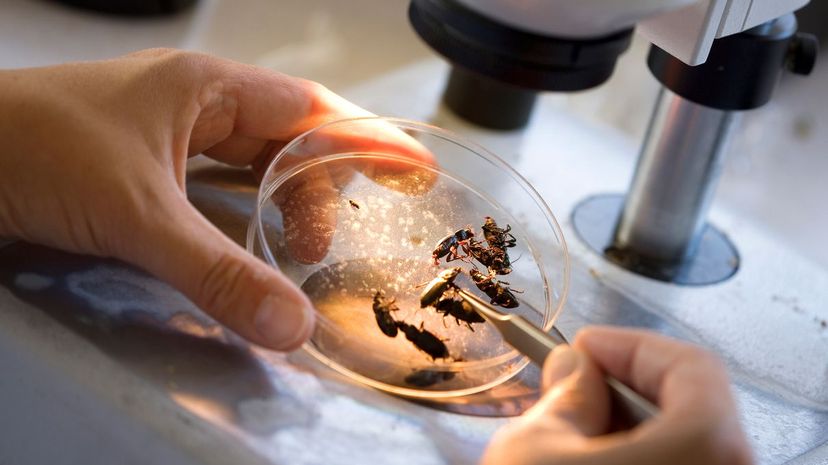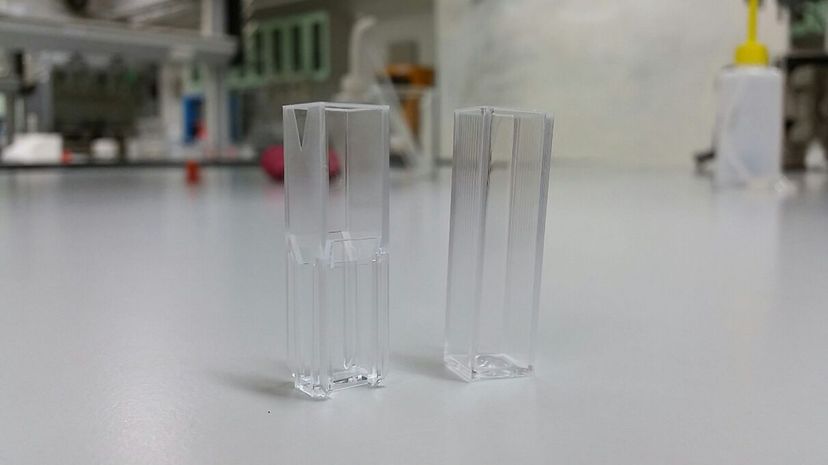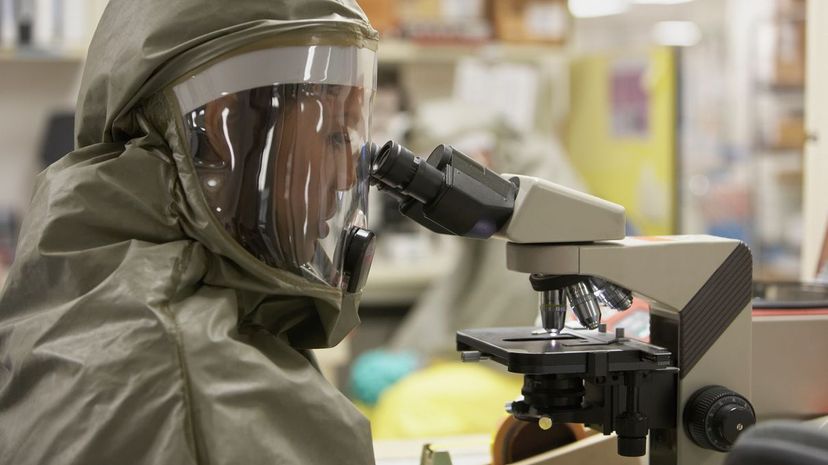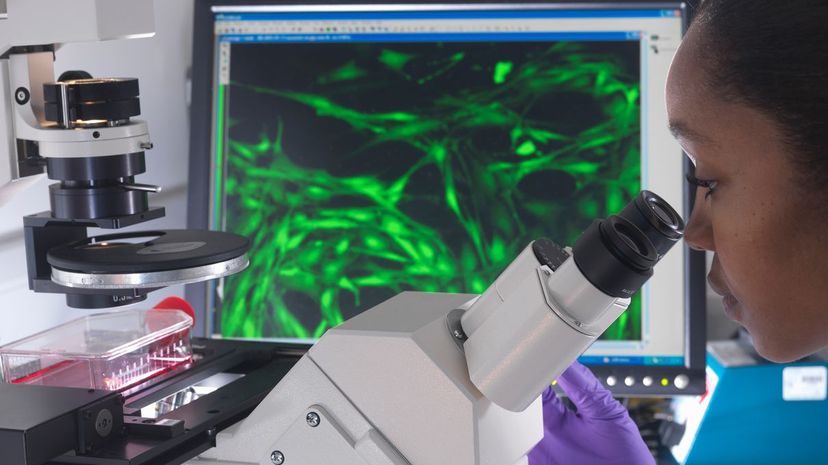
About This Quiz
No offense, but how hard have you been paying attention in biology? What about chemistry? Physics? Anatomy?!
Or perhaps it's been a minute since your last science class. Tbh, we remember our locker combo better than basically everything we learned freshman year. But we're not the ones taking this quiz. You are, fam!
If science is totally your thing (or at least you think it is), then this quiz is definitely for you. We wanna see you nerd out in all your geeky glory over these science terms. If you manage to match even 10 of these words to the right definition, we'll be majorly impressed.
But don't get it twisted: This quiz is gonna challenge you. Bruh, just because you can spell "photosynthesis" doesn't mean you're going to ace our quiz. You need to actually know what it means. Like, do you understand the difference between a proton and an electron? What if we toss a neuron in the mix? If that doesn't have you shook, then you might indeed have what it takes to pass this quiz.
If you can match at least 10 of these science words to the right definition, then you've for sure earned bragging rights. Pass this quiz along to your crew to see who should be crowned Science King (or Kween).
Are you ready, or do you need to light a Bunsen burner under you?

Who said romance is dead?! For real, though, mutualism is the science word we use to describe a relationship between two kinds of organisms that benefits both. We wish we could find something like that on Tinder.

Any knowledge you have of prefixes probably helped with this one. We see you, Grammar Guru. This is majorly important: For every particle of ordinary matter, there is an almost identical antiparticle of antimatter.

When you saw that "-ology" suffix, you knew we were talking about the study of something. We're not trying to give you the creepy-crawlies, but this special branch of zoology is concerned with the study of insects.
Advertisement

Having the right tools is a huge part of doing science, my dude. While it's no Bunsen burner, a cuvette is still big important. This little container holds the liquid samples in a spectrophotometer or other instrument.

My dude, you are killing it. The outermost layer is known as the epidermis. On plants, this refers to the roots and leave. On humans, we're talking about that top layer of skin. Don't forget to put some lotion on your epidermis!

Diurnality is how the majority of animals live ... including human beings! Even if you're a night owl, your body is still hardwired to sleep when it's dark out and be awake during the day.
Advertisement

You're, like, big smart about this science stuff. Exothermic reactions often release energy as heat and, sometimes, as light too. The opposite of this process is an endothermic reaction which absorbs heat, thus cooling the surroundings.

For real, though, an achondrite is a type of meteorite. It's actually made up of a material similar to plutonic rock. Big mood, right? Unlike many meteorites, they don't contain the small, rounded particles called chondrules.

You best believe we hit you with another pun. We'll be here all week, folks! While virology is the study of viruses, a virologist refers to the person actually studying those parasitic particles and virus-like agents.
Advertisement

Now, don't let the German throw you for a loop. When a fast charged particle (such as an electron) slows down as it passes to matter, it loses energy in the form of electromagnetic radiation. Bremsstrahlung translates to "braking radiation."

Did you have the right reaction and guess "refraction?" Perhaps the most well-known example of refraction is sunlight passing through raindrops and causing a rainbow. You can also peep light refracting with the help of a prism.

You've for sure looked under a microscope before. All that stuff floating around outside the actual cell can get engulfed via the cell membrane through a dope process known as endocytosis.
Advertisement

Don't get tilted if you took an L on this one. Inertia refers to an object's resistance to change. YKTV, an object in motion stays in motion until acted upon an external force. That sounds like it could hurt.

You need oxygen, right? Of course, and same over here! But did you know what doesn't need oxygen to grow? Anaerobic organisms. Not only do they not need oxygen, but these types of organisms may even die if oxygen is present.

Yes, like the "Guardians of the Galaxy" character. Space movie, space stuff: It just works. Idk if we'd want to be named after a cloud of dust and gas, but Nebula doesn't seem to mind.
Advertisement

Whether an organism's genetic information is changed naturally or experimentally, we call the process mutagenesis. Sometimes it's caused by radiation or chemicals. It's necessary to have receipts to be able to identify exactly what changes took place.

Not sure how to pronounce "facula?" Well, it rhymes with a certain Transylvanian vampire. Yup, Dracula! The largest faculae (plural) we know about are seen near the sunspots on everyone's fave giant ball of fire.

We're at our absolute worst when we're hangry. It would be #GOALS to be able to convert energy into sustenance like a biovorous organism. When we're starving, even some biological material sounds tasty.
Advertisement

Don't let anyone tell you you're not luminous. Like you, we talk about bright stars in terms of their luminosity. One big luminous celestial object is the Peony Star. Get out your telescope to peep it!

This science word is none other than osmosis. Typically, we're discussing water when we're chatting about osmosis, but it can also refer to the diffusion of other liquids. Let's give it up for semi-permeable membranes, amiright?

Tbh, this word sounds made up, but a quark is, like, an actual thing. So, what's their deal? Well, quarks come together to form hadrons. Certainly, you're familiar with those. We're talking about protons and neutrons, fam.
Advertisement

You're a freaking impressive little scientist person, did you know that? You must also know a little something about mathematics, physics and engineering because the term "vector" exists in those fields as well.

Anytime a planet moves clockwise, it's something to note since they generally move in a counterclockwise direction. Astrology stans think Mercury in retrograde has the power to really shake things up for people down here on Earth.

One dalton (Da) is similar to the weight of hydrogen. Heavy, right? Yuh, no. Ready for more comparisons? A dalton also approximately equals the mass of one proton or one neutron. Hope you're keeping up!
Advertisement

Please, PLZ tell us you got our pun. Lit? Electrolysis?? Okay, we guess we're gonna have to try harder. In this technique, a direct electric current forces an otherwise non-spontaneous chemical reaction.

It may be at the end of the alphabet, but to say the xylem isn't a critical part of the plant would be savage. It's one of two types of transport tissue (the other being phloem). The basic function of Mr. X is to transport water and nutrients from the roots and stems to the leave.

While an anemometer is best known for measuring wind speed, that's not all it's good for. Consider this handy apparatus your go-to for calculating the current of any gas. Now, that's what's up.
Advertisement

Yuh, we're throwing it back to human anatomy with this one. You can find a jejunum in most higher vertebrates. Think mammals, birds and reptiles. This section of the intestine is located between the duodenum and the ileum.

"Pon" might seem like a simple word, but as with any brain stuff, it's actually a very complex part. You can find it hanging out anterior to the cerebellum in humans. It's chilling there, YKTV.

We're not talking about the furry woodland creature. In this case, the number of particles in one mole of a substance is called Avogadro’s number. You can find it using a super-specific equation, but we'll save that for another day.
Advertisement

Ah yes, good ol' solar energy. Now, that's fire. Insolation is what we call the solar radiation that manages to reach Earth's surface. As we're sure you can guess, this majorly affects our planet's temperature.

To plants (actually, to all of us), the Sun is life. There are a lot of stimuli, but it's pretty much the most important one. Have you ever seen an indoor plant growing toward a window? It's not that it has a mind of its own, but rather, the plant is exemplifying tropism.

Turn up for induction. Let's break this distinct-AF phenomenon down. Basically, when a charged object is brought near a neutral object, the mere presence makes the electrons in the neutral object move.
Advertisement

Yaas, biome! You know those adorable little terrariums you see in bougie home stores or whatever? Well, basically, that's a mini version of a biome. A biome has its own climate, soil, plants and animals. Talk about a one-stop shop.

If you guessed "cambium," we're impressed. This crucial layer is responsible for the secondary growth of the plant's stems and roots. Because of the cambium, those parts of the plant continue to get thicker.